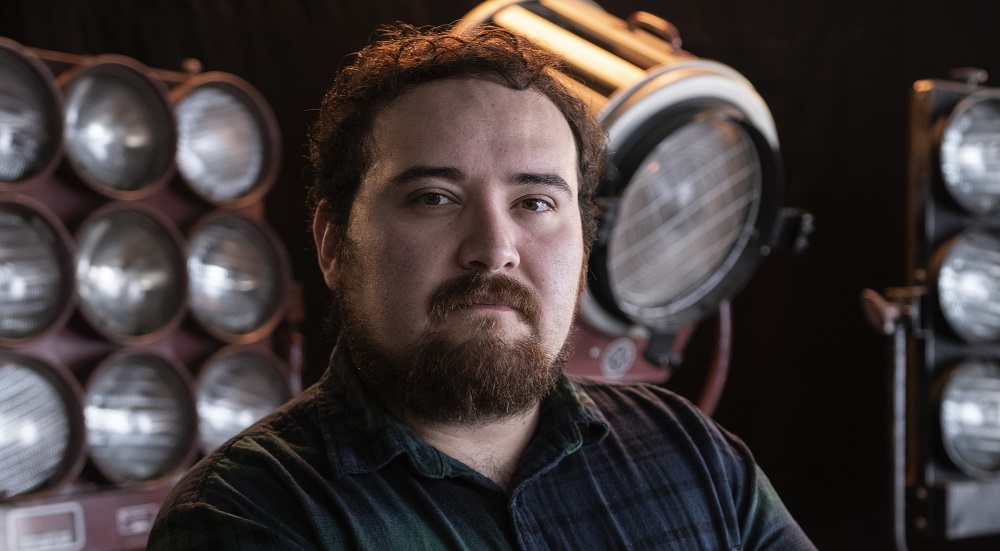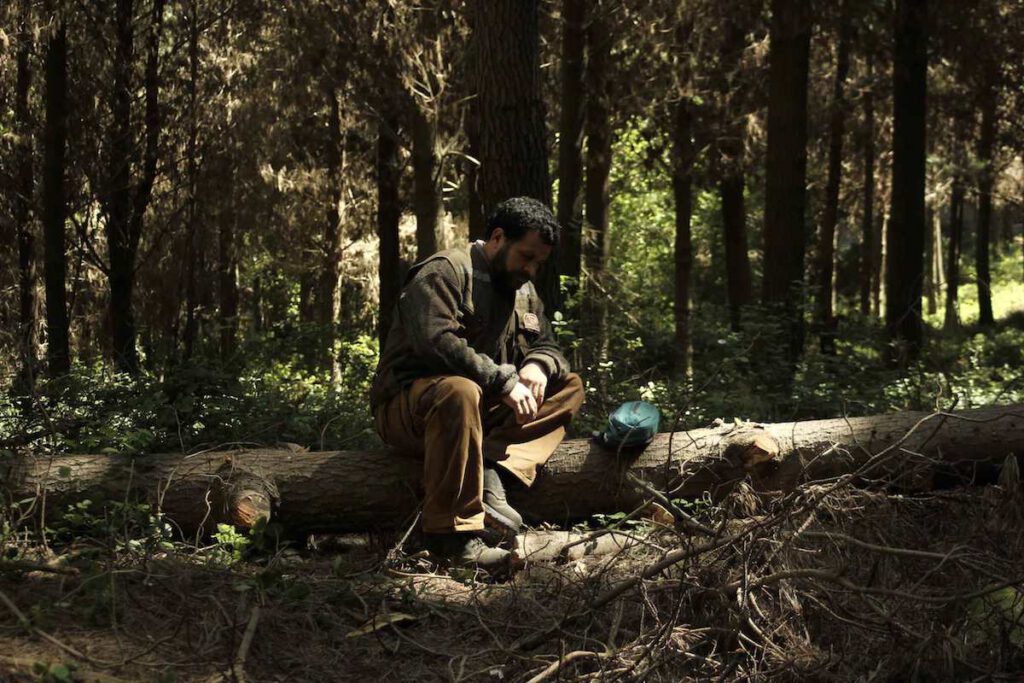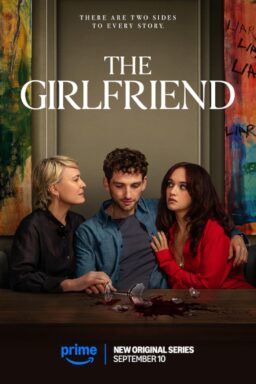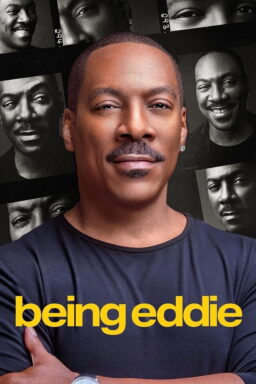Editor’s note: Carlos Aguilar is one of six recipients of the Sundance Institute’s Roger Ebert Fellowship for Film Criticism for 2014. The scholarship meant he participated in the Indiewire | Sundance Institute Fellowship for Film Criticism, a workshop at the Sundance Film Festival for aspiring film critics started by Eric Kohn, the chief film critic and senior editor of Indiewire.
“I was lucky to grow up with a father that was a real cinephile. He would take me to see a film like ‘The Deer Hunter’, and then we would go and see a Bergman movie. When he remembered that I was a child, and that the ‘The Deer Hunter’ wasn’t really for children, [Laughs] he would take me to see an animated movie like a Disney one” says Iranian-born French filmmaker Marjane Satrapi about her first encounters with cinema. Like many other directors from across the globe, her passion for the medium was born from a complex mixture of influences in which the relevance of American cinema cannot be denied.
Show up at a movie theater in almost any corner of the planet and the vast majority of films playing are American. The cultural sensibilities and technical standards of Hollywood have shaped the visions of filmmakers abroad. How have these artists taken what they have learned from Hollywood—the cinematic status quo–and transformed it into something new and truly their own? We spoke to four filmmakers from around the globe about American cinema, American audiences, and their experiences at the 2014 Sundance Film Festival.
Satrapi’s “The Voices,” which played at Sundance, is her first English-language film, which caught many by surprise. She’s pragmatic about the decision. “When you are making an English-language movie you have a much larger audience, it is much more international. This is a fact since English is an international language,” says the director.
Thematically her latest film might appear to be miles away from its predecessors; gore and schizophrenia were not part of her previous oeuvre. Still, although this is a more commercial piece, there is something in the color palette, the irreverent sense of humor and the overly stylized atmosphere that undoubtedly make it a Satrapi film. She has used the American conventions to her advantage, infusing them with originality.
It is perhaps in the filmmaking process, and not in the final result, that Satrapi finds the most differences between the European and American film production philosophies. “The biggest transition is that in Europe the director has the final cut. There is no discussion. That is the law. We have the final cut; it belongs to us, which I think is a very good thing because I don’t know who, besides the director, can know what decision to take. But in Europe, since the directors have the final cut, they don’t discuss it with others, and discussing ideas is good. There has to be a system in between because sometimes you are so much in your project that you need someone from the outside to look at it and tell you if there is something wrong,” says Satrapi.

In terms of the violence in the film, she feels like she didn’t go beyond anything Americans have already seen. In fact, she feels like her restraint makes her film work better than other horror classics. “I hate when I see something penetrating into the flesh; it really upsets me, and it takes me out of the film. Here, I never show what he is cutting; you never see the blade going in. I think that a human being’s imagination is much worse than the reality. It’s like Freddy Krueger, they show him so much that at the end of the film, you are [like] ‘F**k Freddy Krueger.’ [Laughs] If they never showed Freddy you would be much more scared of him than if you see him 55 times. He becomes like a puppet.”
Of course, American audiences and the film industry are much more condoning of violence than of sex. Thus, for French provocateur Alain Guiraudie, his relationship with American cinema is one of contrast. His film “Stranger by the Lake” features sexually explicit images involving homosexual men. He offers some theories on the difference between American and European views on sex. “In American movies people always sleep at night with undershirts and underpants. [Laughs] This is sort of the American Puritanism. I don’t know American people that well, perhaps. However, the sexual liberation, that in which people first decided to go to the beach naked, to live together naked, took place in America with the hippies. It wasn’t in Europe, or maybe it was at the same time, but it wasn’t before. I’m not sure what it is but there is a fundamental difference between Americans and Europeans. We have a long romantic tradition that makes people go as far as they can in a love affair, which I think is very French.”

Nonetheless the celebrated auteur clarifies that subversive or challenging cinema can come from anywhere in the world, even from the most conservative places. “In American independent cinema, there are films like John Cameron Mitchell’s ‘Shortbus’ that include real sexual encounters. The difference between ‘Stranger by the Lake’ and ‘Shortbus’ in terms of these sex scenes is that [in ‘Shortbus’] non-actors performed them, and this is an American movie! Even in a puritan country like America it is possible to make this kind of films,” Guiraudie says. He also notes the not-so-exciting response of the Sundance audience in comparison to that of European festivals “Cannes had the most enthusiastic audience for my movie, London and Vienna as well, those three. At Sundance there wasn’t such a warm welcome. [Laughs] What can I say? In Cannes it was 1000 people, because it was the World Premiere, in London 800 people, in Vienna 700 people, here it was 200 people, and the number of people makes a difference. It is very odd to compare. The only thing I can tell you is that in Cannes the audience was more enthusiastic.”
The expectations of American audiences sometimes don’t seem to align with what filmmakers abroad are making. “In Hollywood no one can stand 20 minutes without dialogue,” says Chilean director Alejandro Fernandez, whose film “To Kill a Man” was well-received at Sundance despite being a quiet character study on the ramifications of violence. Fernandez is well aware of the benefits for films like his to be presented at American festivals. “The decision to go to Sundance was because we felt it is a movie that can work in the American market. In fact we got distribution at Sundance. Film Movement will distribute the film in the U.S and Canada in the fall. It’s a film that has genre cinema elements and it has a lot of tension, and these elements that help the film. I think showing it to American audiences will be good. It will definitely help the movie and the future steps I may want to take as a filmmaker.”

Given that in most Latin American countries many of the cinematic offerings come from the United States, the director can’t avoid noticing the influence some of these films have had on him. “I watched a lot of American films when I started liking cinema, around the ’90s. It was mostly American cinema from the ’60s and ’70s, when there was like a re-founding of classic American cinema and the emergence of filmmaker like Scorsese, Brian De Palma, Coppola, or the psychological thrillers of Alan Pakula. Those were very important influences at the time.”
Like Satrapi, Fernandez thinks that the profit-driven American approach can seem like a burden for filmmakers accustomed to working with smaller resources but much more freedom. “I would like to work with perhaps a bigger budget but never at the level of a blockbuster, which is something very ‘Hollywood’. The obstacles would be too many, and I don’t think Hollywood is interested is something so strange as what I do. Even something like ‘To Kill a Man’ that connects with audiences, in formal terms, is not a common film. Hollywood budgets come with many artistic compromises,” explains Fernandez.
Similarly, Cambodian-born British director Hong Khaou, whose latest work “Lilting” premiered at Sundance this year, speaks of the role American cinema played, especially in his earlier years. “It certainly played a greater significance in my childhood…There are too many good films and filmmakers to name or single out, and they change each week. I particularly love films from the ’60s and ’70s. I think that was a very rich period in American filmmaking. There was one film that I kept thinking of when I was writing ‘Lilting’; it was John Sayles’ film, ‘Lone Star’.” Indeed, “Lilting” it is a great example of the cultural diversity in the contemporary globalized state of the industry. “To have the world premiere in Sundance is insanely exciting. Not something one dares to think of. I’m just pleased ‘Lilting’ can have a good start in life. And the Competition slot is the cherry on the cake”

Khaou sees a difference between what World cinema is about and what Hollywood is doing. “The rest of the world is an extremely large area, many different countries with their own specific culture and ideology. I’m not sure I’m equipped to answer this. I think in a very loose way, and I’m generalizing here, American cinema is more narrative driven [or] obsessed. It’s less sparse, leaner probably. Typically but not always, the mainstream has a tendency to synthesize, and can feel too prescribed maybe. The one thing that remains the same I guess would be to tell a story and entertain. And we all have our own interpretation of what that means.”












